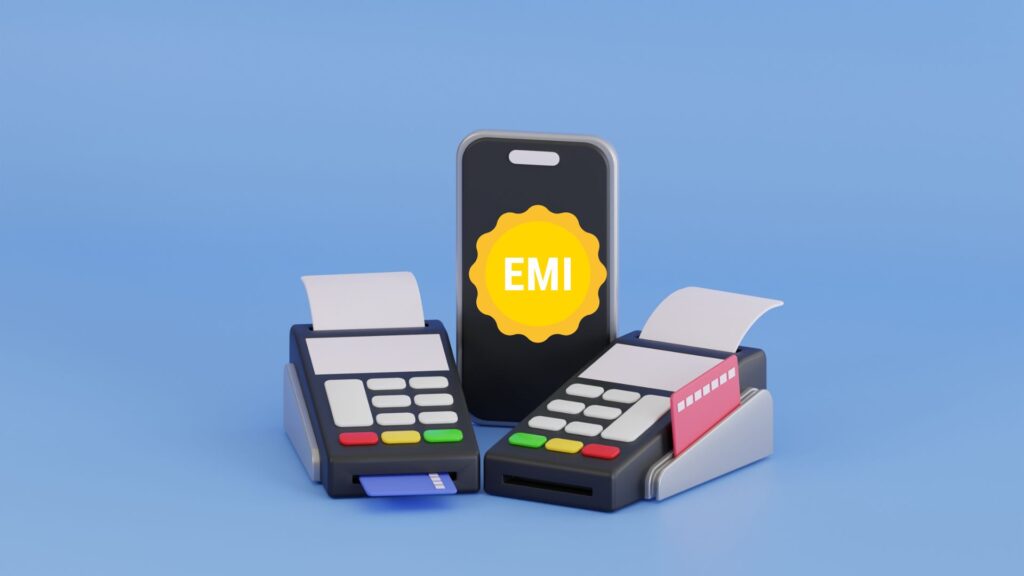What is EMI, anyway?
So, before we start, let us get one thing straight. EMI is not a secret code or
a finance term for which you need a PhD to crack. It stands for Equated
Monthly Installment. In simple language, it is the fixed amount of money
you can pay each month when you have borrowed some serious amount; it
is usually for stuff like cars, homes, or even that fancy phone you don’t
really need but can’t resist.
Let’s say that you finally decide to buy that dream car of yours (or a phone
that costs more than a car these days), but your bank account gives you
the status of “broke,” and it doesn’t actually scream “full payment.” That is
when the EMI steps in like a financial superhero. You will be paying a bit
every month instead of dropping a huge amount of cash all at once. It
sounds less painful, right?
Types of EMI: Because One Size Doesn’t Fit All
Just like there are different types of coffee drinkers (espresso, latte, or just
plain black), EMIs also come in a few flavors. And understanding these will
make you a pro at managing your monthly payments:
Fixed EMI: This is your classic, a no-nonsense EMI. The amount stays the
same every month till your loan is fully paid off. Think of it as your Netflix
subscription; it is consistent, predictable, and sometimes very hard to get
rid of.
Floating EMI: This one is a bit of a wildcard. The EMI changes depending
on the interest rate. If the rates go up, your EMI will increase, and if the
rates go down, then your EMI will decrease. It’s like betting on a roulette
wheel—you are never sure where it will land.
Example: Imagine that you are paying a fixed EMI of ₹10,000 for a home
loan. Every month the amount is ₹10K. But if you are on a floating EMI
plan, then one month it might be ₹10,000, the next it can be ₹9,800 or
₹10,500; it depends on the interest rate.
What Do We Take EMIs For? (Hint: Almost Everything)
Those days are gone when loans were taken only for homes and cars. Now
almost anything and everything can be bought on EMI. Here is a list of
things you can buy without burning a hole in your wallet (immediately, at
least):
Home loans: Houses are expensive; in this economy, unless you are
sitting on a pile of gold, you will need a home loan. EMIs will help you break
down that massive amount into bite-sized pieces.
Car loans: A dream car in your sights (like that attractive black Nexon) but
no cash in hand? Just like your homie EMI’s got your back.
Personal loans: If you need money for something not covered by the other
loans, personal loans, with their easy EMIs, are the solution.
Gadgets and appliances: That new iPhone 16, OLED TV, or even a fancy
fridge—EMI options let you live that high-tech life without robbing your
savings.
Example: Let’s say that you are buying a ₹1.5 lakh iPhone (because why
not?). You could either empty your bank account and pay the full amount,
or you could pay a monthly EMI of, say, ₹5000 for the rest of 36 months.
That seems like the best option, right?
How is EMI calculated? Let’s Get Nerdy!
The formula to calculate EMI might look scary, but don’t worry—I will keep it
simple. Here’s the formula, just so you feel fancy reading it:
EMI = [P x R x (1+R)^N] / [(1+R)^N – 1]
Where:
P = principal loan amount
R = Monthly interest rate (annual rate/12)
N = loan tenure in months
Let’s break that down into normal human language. If you take a loan for ₹1 lakh
at an interest rate of, lets say, 10% for 12 months, your EMI will be calculated by
adding these values into the formula. Spoiler: You don’t actually need to do the
math manually (more on that later).
Example: For a loan of ₹1 lakh at an annual interest rate of 10%, for 12 months,
your EMI would be around ₹8,792 per month.
The Magic of EMI Calculators
There’s no need for you to stress your brain with math when there’s an
easier way to calculate EMIs. Enter 5nancecalculators.com—the MVP of
the loan world. This online website is super handy and does all the heavy
lifting for you. All you have to do is input the following:
Loan amount (how much you are borrowing)
Interest rate (the cost of borrowing)
Loan tenure (how long you plan to play it off)
Hit “calculate,” and boom, your monthly EMI pops up like magic.
Why EMIs Are a Blessing (and Sometimes a Curse)
At the end of the day, EMIs are a lifesaver for most of us who can’t afford to
pay large sums upfront. They make owning a home, car, or the latest
gadget a reality, spreading out the financial burden over time can be really
helpful. But (and it’s a big but), you need to be smart about it.
EMIs can also trap you in a cycle of debt if you take on too many loans at
once. Remember that each EMI is a commitment, and you don’t want to get
into more than you can handle. Budget wisely, use an EMI calculator and
only borrow what you can pay back.
To wrap it up: EMIs are like your daily coffee fix—manageable if you stick to
one or two cups but it will become a problem if you are downing 5 lattes a
day. So balance it out and stay financially woke!
